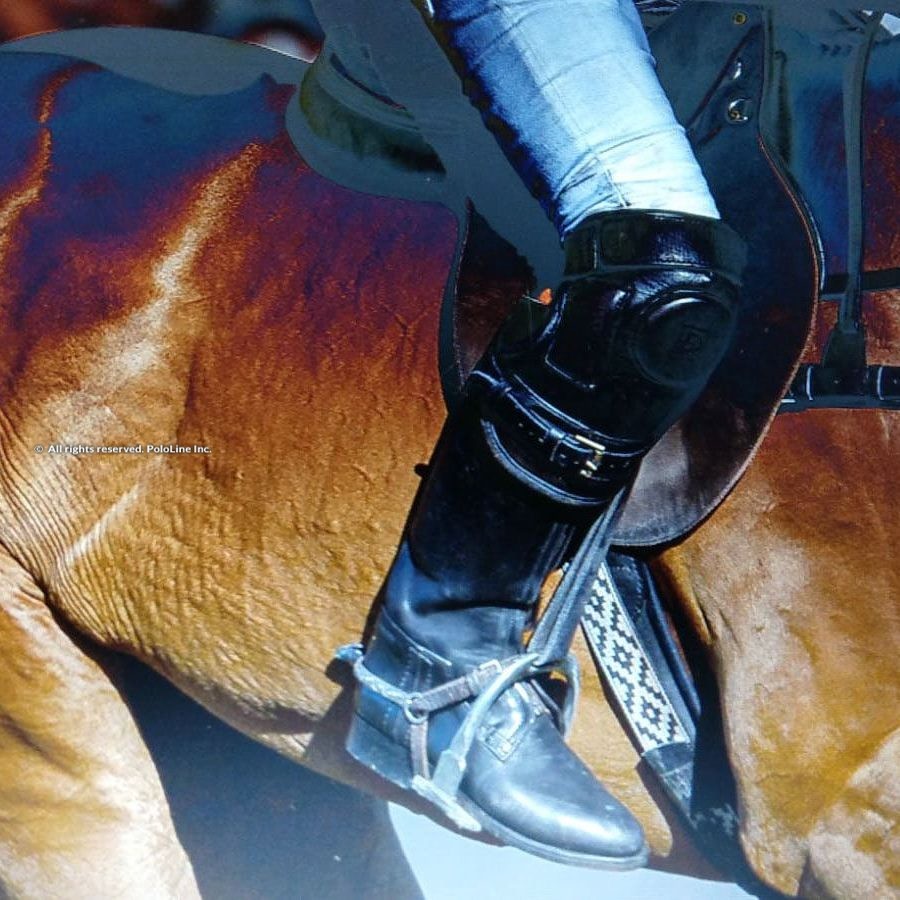Whether riding without a mallet or riding and moving to strike a ball, a player assumes a series of positions in the saddle to maintain balance. That is the essence of polo.
It is known that the location of the stirrups relates to the exact position of the horse’s center of gravity when static. When the horse starts to move, that center of gravity shifts. A player must compensate for these movements in order to maintain balance.
To understand this act of compensation, we can divide the body into three parts: The superior part (torso up to the belly button), the lower half of the spine (pelvis, which is the mobile part), and the legs.
The legs can be divided into three working parts:
- a) Adductors (riding muscles)
- b) Inner part of the knees
- c) Feet (supported by the stirrups)
To compensate correctly, these three elements should work together in such a way that they adjust depending on determined movements. At certain points the adductors and the knees will work more, while at others, the feet, with the help of the stirrups, will take center stage.
This can happen at times where our torso (upper body) leans forward—such as when we rise to a half seat (triangle)—or when we finish the swing (follow through), and in certain positions in between, where our legs (feet) go back to a greater or lesser degree depending on the movement or swing. In these instances, the adductors work more and can be aided by what can be called the tripod support (leaning the left hand, with the reins, on the base of the horse’s neck).
Also, when a player rises or grips, they try to maintain perfect coordination so that they don’t fall forwards or backwards. They do this adopting a vertical position supported by the stirrups and adductors. This not only favours the player’s riding, but it also favour the horse’s stride when a player stands in the stirrups.
At the end of a swing, the momentum drives a player’s body to follow its direction. Consequently, the supporting leg, the one that helps a player balance, moves backwards. This is where the adductor muscles work. Once again, the tripod—leaning the left hand on the base of the horse’s neck—can counteract the work of the adductors. A player’s hand moves further forward when the breadth of the swing is bigger, and the power of the strike is greater. A similar phenomenon occurs when a player tries to hook a mallet at distance: they move forward, practically leaving the saddle, and lean on the base of the horse’s neck, at times almost reaching the horse’s ears.
When hitting a backhander, a player’s adductor muscles work particularly hard, due to the forward inclination of the torso. To summarize, maintaining coordination between the adductors, knees, and stirrups is not only advantageous when steering the horse, but it also benefits a player’s swing and follow through.
